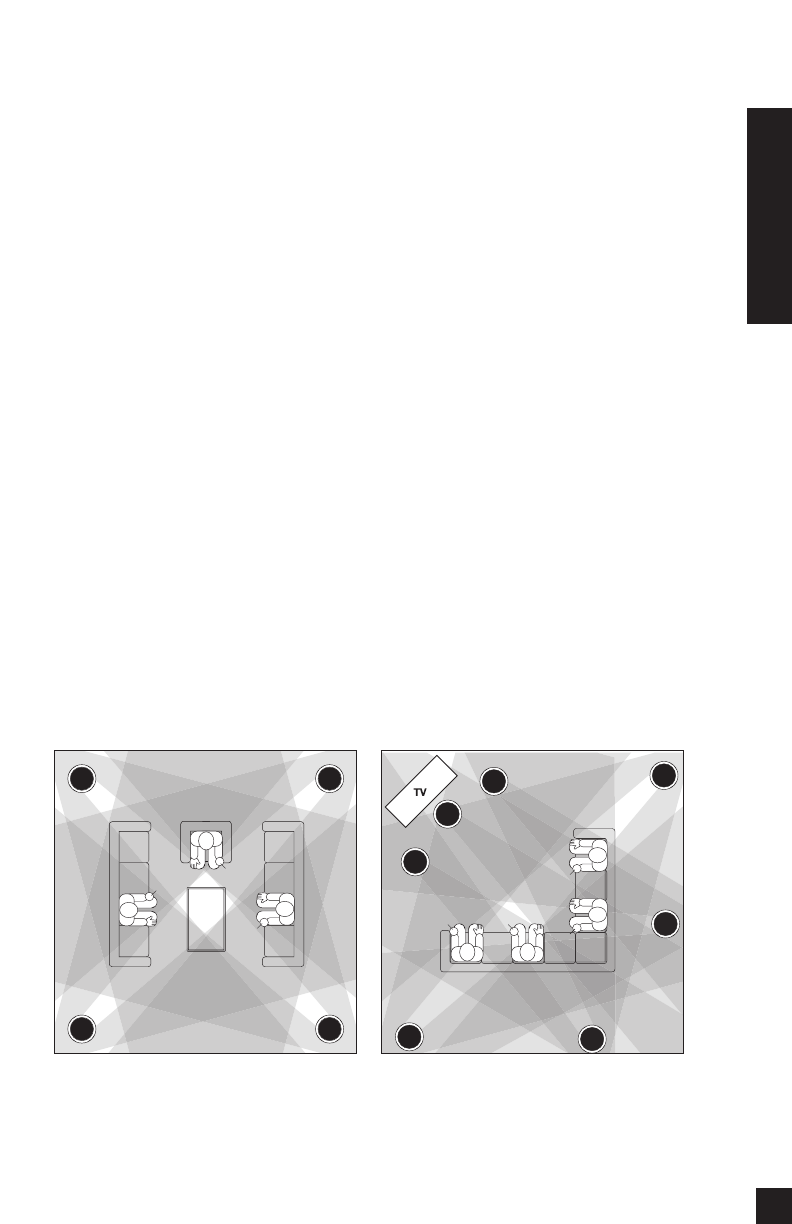
more “surround sound” effect. However,
as you move the loudspeaker farther away
from the listener, both the reflected and
the direct sound will dissipate, requiring
more power from your surround sound
amplifier channels. If the surround sound
system you are using has a small five or
ten watt amplifier for the rear loudspeak-
ers, stay within five to eight feet of the lis-
tening location. If you are using a 25 to 50
watt amplifier you can mount the loud-
speakers 10 to 15 feet away from the lis-
tening location and still achieve reason-
ably high volume levels.
In large or unusually shaped rooms this
might be the only way to achieve a good
effect. If you like to listen to music
surround modes which emulate concert
hall acoustics, more than two surround
loudspeakers will prove extraordinarily
effective
(See Figure 6). With Niles
DS8.3 and DS8.5 loudspeakers it is easy
to add another pair without affecting the
decor of the room. However, you will
need to use a much more powerful ampli-
fier than that which is built into a typical
surround sound receiver or amplifier.
Niles makes a number of Systems
Integration Amplifiers with proprietary fea-
tures that make them uniquely suited to
enhance a good
surround sound system. Consult your local
Niles dealer for more information.
The Boundary Effect
Corners can affect the bass response of the
loudspeaker powerfully! This is called the
boundary effect. You will emphasize
particular bass frequencies and cancel out
other bass frequencies when you place
loudspeakers close to the wall/ceiling
boundary or a corner wall boundary. This
can make the loudspeaker sound exces-
sively boomy and inaccurate to some lis-
teners, while to others it just seems like
more bass sound. A good rule of thumb is
if you always listen to your current pair of
loudspeakers with the bass turned up,
you’ll enjoy corner placement. If you keep
your tone controls at neutral, try to keep
the loudspeakers at least two or three feet
from the boundaries of the room.
8
Speaker Placement
Figure 5
Varying Listening Position
Figure 6
Surround Sound


















